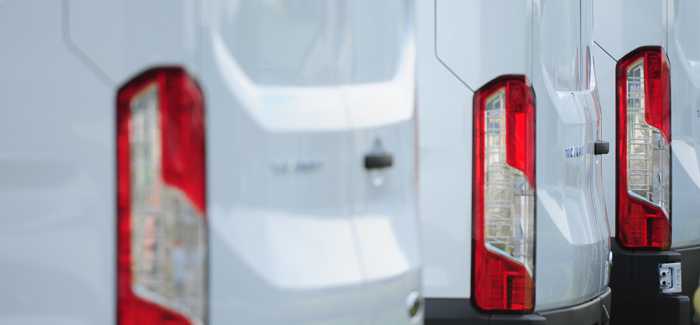
Van road tax calculator
Vehicle Excise Duty (VED), which is more commonly known as road tax, is currently fairly straightforward when it comes to vans.
It's a fee that must be paid in order for any vehicle to legally drive on public roads in the UK, and money raised from VED goes straight to the general UK Treasury fund.
Whilst all vans formerly had to display a tax disc on their windscreen to prove that the vehicle was covered, this was abolished in October 2014; since which point, the records are all kept digitally and no physical proof that you've paid VED is now required.
What happens if you don't pay your van's road tax (VED)?
All vans must have a valid MOT certificate (if older than three years) in order for VED to be paid when it's due; otherwise the van owner will need to make a Statutory Off Road Notice (SORN) and ensure the vehicle is kept off public roads and not driven until the point that it once again has a valid MOT, appropriate insurance cover and VED has been paid.
If you fail to tax your vehicle and don't have a SORN in place, you will automatically be fined £80 by the DVLA (Driver & Vehicle Licensing Agency). There is also a fine for not having an adequately insured van if it isn't covered by a SORN.
See how much you can save
Compare van insurance quotes today!
How is van road tax different to car tax?
The VED on cars has for some time been based on their emissions, hence why there are so many different bands and categories. All cars registered before 1 April 2017 will continue to be categorised in this way, but new cars, registered after this date, will fall under new rules.
New cars will now be categorised by their emissions only in the first year, from which point a flat rate will be applied depending on the type of vehicle i.e. an electric vehicle, a vehicle that runs on alternative fuel or a petrol/diesel car.
VED for vans differs because, depending on the age of your vehicle, road tax is calculated not on emissions but by either engine size (for pre-March 2001 registered vans) or a flat rate is applied (for post-March 2001 registered vans), although there are some exceptions to this rule.
Calculating your van's road tax rate
The flat rate for VED, which applies to most vans under 3,500 kg in weight, has been slightly raised in April 2017, after the UK's 2017 spring Budget announcement. The vans that fall into this category are all of those built after 2001 that fall under the TC39 VED tax code.
The logbook/vehicle registration document (V5C) should contain details of your van's Euro emission standard, usually in section D.2. For vans which have Euro 4 or Euro 5 classification (TC36 VED code), the rates are different. Again, your vehicle logbook will contain details of the category that your van falls into.
The table below should help you to calculate how much you will need to pay for your van's VED:
| For vans registered before 1st March 2001 | |
|---|---|
| Engine Size | VED due |
| 1595cc and under | £155 |
| Above 1595cc | £255 |
| For vans registered after 1st March 2001 | |
|---|---|
| Type of van | VED due |
| Euro 4 & Euro 5 compliant vans | £140 |
| Fully electric vans | £0 |
| All other vans up to 3,500kg vans | £250 |
See how much you can save
Compare van insurance quotes today!
If you'd prefer to pay for van tax either six-monthly or monthly via direct debit, you can set up payments with the DVLA, but it's worth noting that there is a 5% surcharge if you choose to pay this way.
You will end up paying slightly more for your van's VED by choosing this option, but it can be a better fit for some van drivers rather than paying for 12 months all in one go.
However you want to arrange payment, you can tax your van online as long as you have the v11 reminder, which is sent through the post a few weeks before the existing VED expires. If you don't have your v11 reminder then you can still tax your car online if you have the logbook/V5C documentation.
If you've recently bought the vehicle and don't yet have the paperwork confirming that you are the registered keeper, you should have a V5C/2 form, which you can also use to pay VED online.
If you have lost your van's V5C, or are a new keeper and didn't receive a V5C/2, then you will need to apply for a replacement V5C and will have to tax your van at a post office. For full details of what to do in this situation, click here.
Electric vans and VED
If you drive a 100% electric van, VED is free, but it's important to note that you still have to apply for van tax even though there is no charge.
If you fail to apply for your electric van's VED then the DVLA's national system will show the vehicle as untaxed and you may find yourself in receipt of a fine.
| Need van insurance? We compare quotes from the UK's leading insurers in less than five minutes. Click here to start your quote. |
|---|
For the most up-to-date information on vehicle tax rates, head to GOV.UK.
